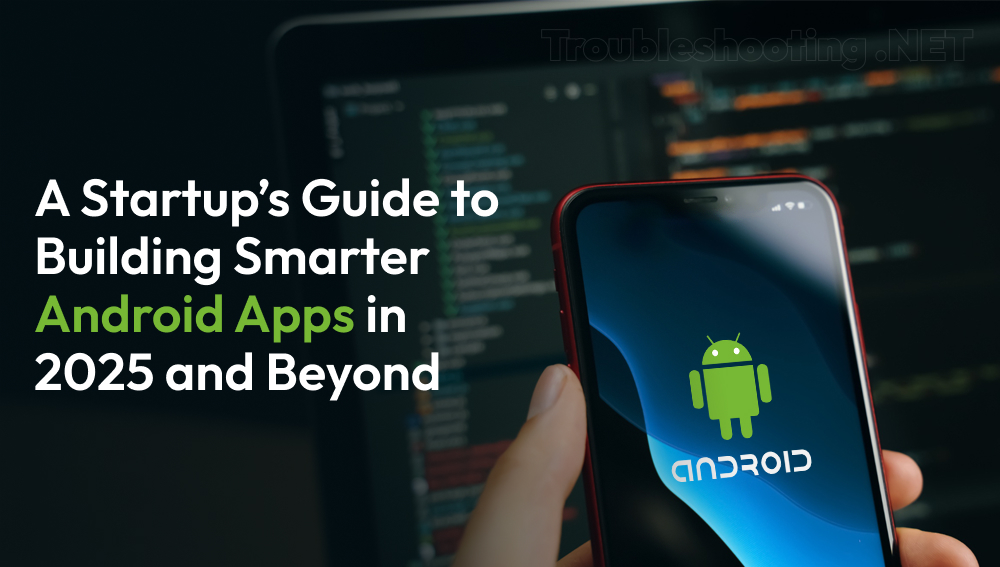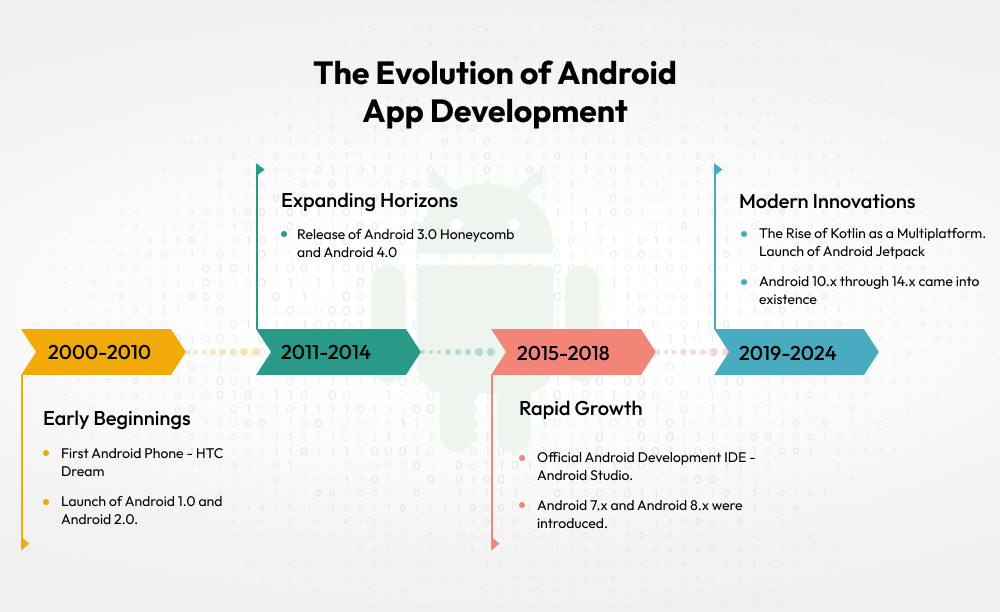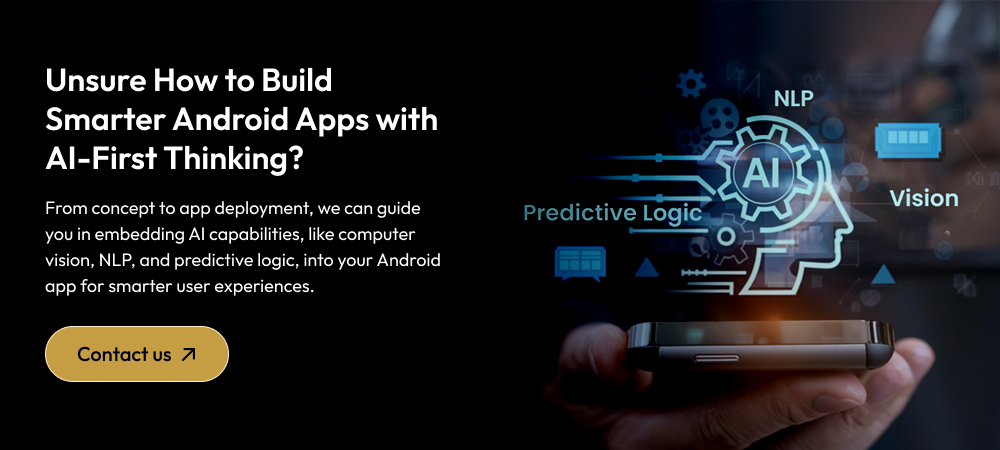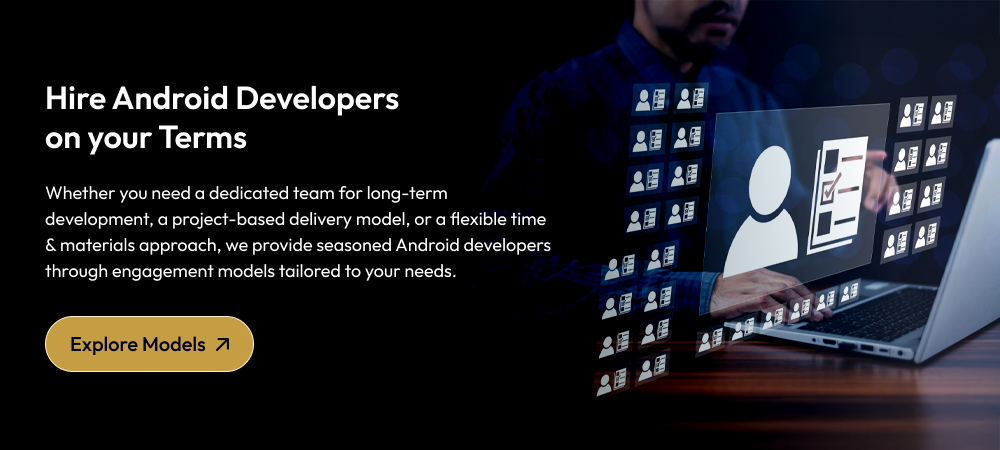
The Android segment in the application development market has been remarkably dynamic. With emerging technologies, evolving Play Store guidelines, and constantly changing user preferences, it has grown into a vast ecosystem, projected to reach a market size of approximately USD 320 billion by 2032!
Working on an app to be released in such a space can be challenging, especially if you’re new to the industry. You will have to balance tight budgets, align your app with user expectations, and meet stringent platform guidelines simultaneously. This write-up will explore some key trends that can help you strategize your Android app development approach. Before exploring the trends, let’s take a moment to revisit the key milestones that have shaped the Android segment and understand where it stands today.
- The Evolution of Android App Development
- The Current Era: 2025 and Beyond
- Android App Development Trends you Should Know as a Startup
- Unsure How to Build Smarter Android Apps with AI-First Thinking?
- Android App Development Tips: Staying Afloat as a Startup
- Hire Android Developers on your Terms
- Final Thoughts
The Evolution of Android App Development

Early Beginnings (2008-2010)
The era of Android development officially began with the launch of Android 1.0 in September 2008, coinciding with the release of the HTC Dream (T-Mobile G1)—the first commercially available Android device. This foundational version introduced features like:
- Android Market (now Google Play Store)
- Basic app functionalities: Gmail, Maps, YouTube, and Calendar
- An open-source framework and Linux-based OS, which distinguished (then) Android from Apple’s closed ecosystem.
Android 2.0/2.1 was also released during the period, while the Android SDK was made freely available, attracting a growing developer community.
Expanding Horizons (2011-2014)
This phase marked Android’s push into tablets, UI refinement, and multimedia capability.
With the release of Android 3.0 Honeycomb, Android development expanded its horizons, bringing tablet compatibility. This period saw a few other developments, such as the Ice Cream Sandwich (Android 4.0), which provided developers with a direct path for low-grade multimedia streaming.
Rapid Growth (2015-2018)
From 2015 to 2018, Android Studio became the official IDE, improving development efficiency. Android 6.0 (Marshmallow) was introduced with key features like app permissions and fingerprint access. This was closely followed by Android 7.0 (Nougat) and Android 8.0 Oreo.
Modern Innovations (2019-2024)
From 2019 to 2024, Android development transformed, with Kotlin becoming the preferred language due to its modern syntax, safety, and Google support. This era also saw the launch of Android Jetpack, which simplified development with powerful tools and libraries.
The Current Era: 2025 and Beyond
In 2025 and beyond, the development focus has shifted to:
- Privacy-first app designs and architectures,
- 5G integration,
- Sustainable development processes,
- AI/AR/VR integration for more immersive experiences,
- Adapting Android apps for foldable devices and wearable technology.
The following section will explore them in more detail.
Android App Development Trends you Should Know as a Startup
As a new establishment, your priorities can be slightly different. You must focus on stabilizing your business and refining your product/service without running out of resources. Consequently, your approach to Android app development must balance innovation with practicality.Focusing on trends driving advancements in this industry can help you carve a niche. Here are some of those trends:

1. Emphasizing Privacy and Security
According to an Application Security Threat Report, 57% of mobile apps faced an attack within a general four-week observation period in February 2023, and that figure increased to 65% in 2024. In such a vulnerable environment, there is growing attention to data protection and compliance with stricter regulations like GDPR and CDPA.
This has shifted preferences toward security-focused Android app development, rigorous testing, and compliance assurance to deliver secure apps.
2. Expanding 5G Connectivity and its Impact
The global rollout of 5G connectivity, expected by 2025, is transforming app expectations for businesses and users. With ultra-low latency and faster speeds, apps can now support real-time edge processing, high-definition streaming, and seamless AR/VR experiences.
To meet these demands, developers are rethinking app architectures by adopting edge computing, optimizing APIs, and transitioning to cloud-native solutions. Additionally, efficient video codecs like AV1 and frameworks like ARCore are being utilized to enhance streaming and immersive app experiences.
3. Rising Demand for AI Integration and Immersive App Experiences
As in countless other areas and domains, AI has also redefined what Android apps can achieve. From intelligent automation and predictive analytics to voice assistants like Samsung’s Bixby, AI has improved app experiences.
With AI becoming increasingly normalized, highly functional Android apps must include features like image recognition, text translation, AI-powered transcription, and sentiment analysis. For this, businesses are shifting to AI-generated and adaptive app layouts to optimize for diverse devices and user behaviors.

4. Shifting Towards Sustainable App Development
MarketsandMarkets projects the green technology and sustainability software market to surpass USD 53.02 billion by 2030. This growth reflects a rising focus on reducing the environmental impact of app development. Businesses are prioritizing energy-efficient designs to lower battery usage and device strain, meeting user expectations while supporting global sustainability goals.
To meet this new demand, many are relying on techniques such as using low-power APIs, reducing background processing, and optimizing screen refresh rates. Tools like Android Studio’s Energy Profiler also enable developers to analyze energy consumption patterns.
5. Increasing Preferences for Apps for Foldable Devices
As of 2024, the market for foldable devices amounted to 25 million, up 37.6% from the 18.1 million units in the previous year. This pushes the boundaries of Android application development beyond conventional methods, requiring adaptable designs and innovative layouts.
Amidst these shifting preferences, Flutter has emerged as one of the best Android app development tools and frameworks. With dedicated features, such as TwoPane Widgets and the Dual-Screen Emulator, it has simplified app development and optimization, even for diverse screen sizes and formats.
Android App Development Tips: Staying Afloat as a Startup
Planning to get started? Here are some Android development best practices to set you up for success:
- Wireframe and prototype for clarity. Detailed wireframes can help everyone—designers, stakeholders, and developers visualize your app’s structure and layout. Similarly, prototypes can simulate the functionality and help you test user flows.
- You can also consider starting with an MVP (Minimum Viable Product), a basic version of your app with only the core features. This will allow you to test the waters without incurring a hefty cost.
- Use modular architectures, which break your app into manageable components, to facilitate development and maintenance. This simplifies scaling and reduces development complexity.
- Test performance across diverse Android devices, including foldable devices with multiple screens, to ensure compatibility.
- Rely on cloud services to handle back-end operations, data storage, and scalability, reducing the burden (and the expenses) of infrastructure management.
- The future is fast. Optimize your app for low latency and 5G connectivity.
- Don’t shy away from investing in application security and compliance. Adhere to all data privacy and security regulations.
Lastly, budget allocation should be approached strategically. Prioritize return on investment (ROI ) without compromising on application security, performance, or user experience. Partnering with a trusted Android app development company is a proven approach to work with seasoned professionals and benefit from established workflows. Alternatively, businesses can also scale efficiently by hiring dedicated Android developers to augment internal teams, ensuring flexibility, faster delivery, and technical precision.
Final Thoughts
With more than 3.3 million Android apps, success in this industry lies in adaptability and foresight. Particularly when you are a relatively new company, you must focus on building apps that resonate with users while positioning yourself to thrive in a competitive market. This is one area where professional Android app development service providers can help you. With their guidance and industry experience, you can launch a high-performing, adaptable app that works well across diverse device formats. Regardless of how you work on the project, whether internally or with professional service providers. Staying current on the most recent Android app development trends and prioritizing adaptability across diverse devices can position you for assured success.

